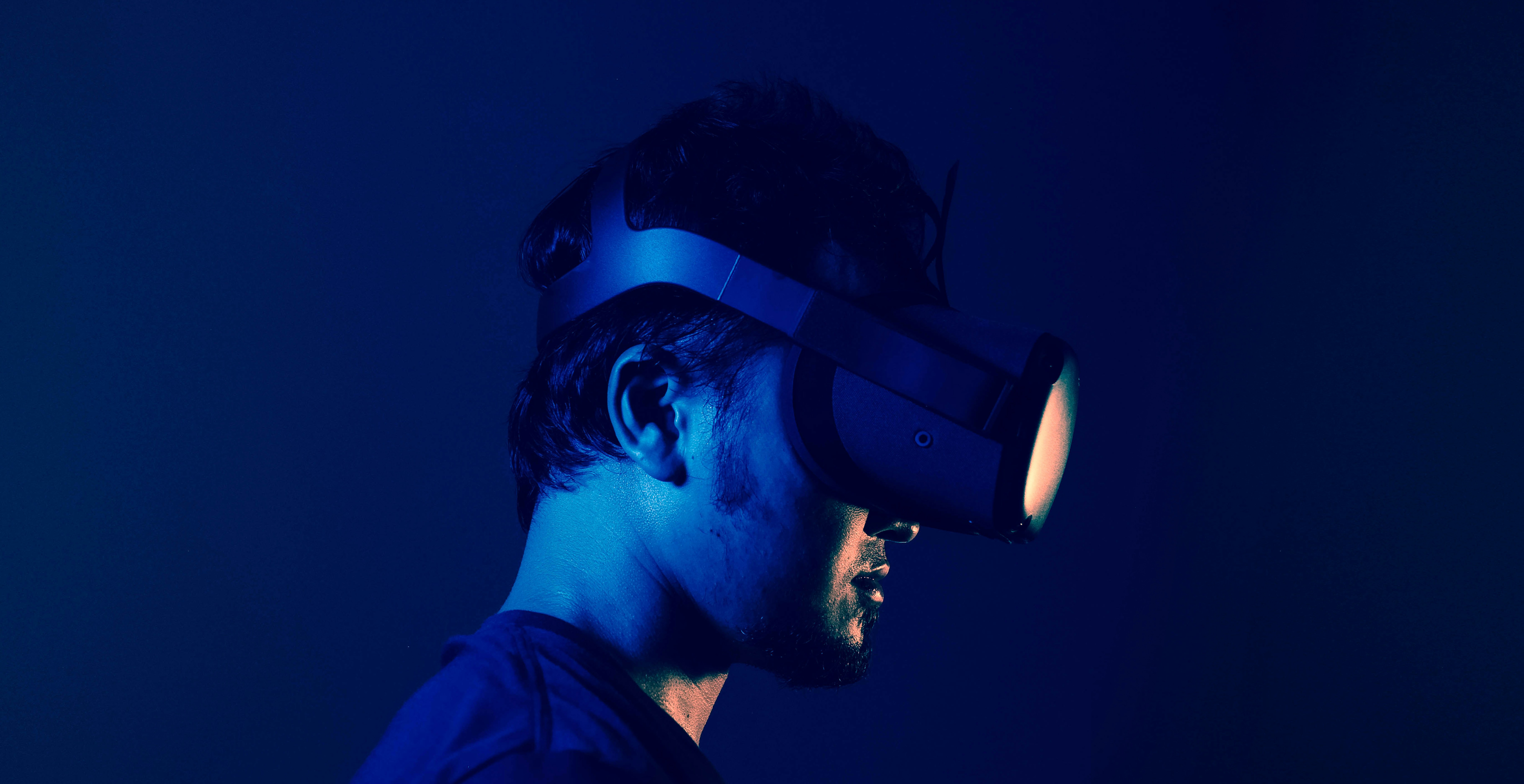
Tips for Staying Inspired: How Medical Technology Pros Fuel Creativity and Innovation
Medical technology is one of the fastest-evolving fields, sitting at the intersection of healthcare, engineering, and innovation. Whether you’re designing advanced imaging devices, refining robotic surgical tools, or developing novel diagnostic platforms, staying inspired is crucial. And yet, tight regulations, rigorous testing protocols, and a high-stakes environment—where patient outcomes and lives may be on the line—can make it challenging to maintain fresh ideas and a creative mindset.
So how do medtech professionals—engineers, product managers, researchers, clinicians—continue fuelling innovation amidst these demands? Below, we explore ten strategies that help those in the medical technology sector remain imaginative and proactive. Whether you’re part of a start-up pioneering a ground-breaking implant or you work in a large corporation refining existing medical devices, these tips can bolster your creativity and keep you at the forefront of impactful breakthroughs.
1. Reconnect with the Core Purpose of Medtech
Amidst daily tasks—assembling prototypes, auditing documentation, handling regulatory submissions—it’s easy to lose sight of the bigger picture: improving or saving lives through technology. Grounding yourself in this overarching mission can reinvigorate your day-to-day work.
Focus on Patient OutcomesVisualise how your device or software enhances patient care. Are you reducing recovery times? Giving clinicians earlier diagnostic insights? When you remember that your work could alleviate suffering or save lives, even monotonous tasks feel more meaningful.
Highlight Success StoriesRevisit medtech milestones: how endoscopic tools revolutionised surgeries, or how wearables empowered patients to monitor their health in real time. These achievements confirm that even incremental improvements can yield transformative results.
Embrace Human-Centric DesignWhether you’re an R&D engineer or a regulatory affairs specialist, human needs remain the heartbeat of medical technology. Identifying with users, patients, and clinicians underscores the value of each step in the development process.
Why This HelpsWhen you remember medtech’s potential to directly improve quality of life, even the most routine compliance checks or data analyses become building blocks in something bigger. This perspective ignites a sense of purpose and can spark fresh thinking about better design, safer processes, and more accessible solutions.
2. Embrace Cross-Functional Collaboration
Medical technology thrives on an eclectic blend of insights from medicine, biomechanics, electronics, artificial intelligence, and beyond. Proactively seeking out collaborations can introduce you to new problem-solving methods and accelerate innovation.
Partner with Clinical ExpertsDoctors, nurses, and other healthcare professionals hold the front-line knowledge. Their practical experience—challenges in the operating theatre, inefficiencies in patient care—can guide you to refine device features or conceptualise new solutions.
Join Forces with Software and AI TeamsDigital health solutions are expanding, from advanced imaging analysis to AI-driven patient monitoring. Working closely with data scientists and developers fosters synergy, merging robust software with reliable hardware or improved device intelligence.
Tap into Academic ResearchUniversities often explore experimental materials or novel mechanical designs that aren’t yet commercialised. Reviewing publications or sponsoring joint research could reveal new angles for your product roadmap.
Listen to Patients and CaregiversAlthough compliance guidelines and engineering specifications shape your device, real feedback from patients and carers can highlight comfort issues, usability concerns, or overlooked needs.
Why This HelpsCollaboration unlocks diverse viewpoints, each revealing different constraints and opportunities. Integrating these insights yields more impactful, user-centred devices, improving both design quality and innovation potential.
3. Explore Side Projects for Unhindered Creativity
While full-time medtech roles often revolve around strict project timelines and regulatory obligations, side projects give you free rein to experiment with fresh ideas—without immediate pressure or large-scale risks.
Build a “Mini Lab”If feasible, set up a personal workspace with basic prototyping equipment—like 3D printers, microcontrollers, or simple mechanical testing setups. Tinkering in a low-stakes environment can inspire you to try novel materials or device concepts.
Experiment with Emerging TechPerhaps you’re intrigued by flexible electronics, additive manufacturing for implants, or augmented reality for surgical planning. Exploring these areas on the side can spark insights that later feed into official projects.
Document Your FindingsKeep thorough notes, sketches, or code repositories. Even if a side project doesn’t reach commercial viability, the knowledge you gain—about new biomaterials, sensor arrays, or user interface ideas—can guide solutions down the road.
Share (or Not)While you may keep the project private, consider sharing your explorations on GitHub or in internal R&D sessions. Constructive feedback might accelerate your learning or attract a collaborator who can elevate the concept.
Why This HelpsSide projects foster autonomy and reawaken curiosity. They remove barriers like immediate regulatory checkpoints or rigid work scopes, letting you brainstorm freely and possibly uncover next-generation ideas for medical devices and solutions.
4. Engage in Hackathons and Competitions
Hackathons aren’t limited to software. Healthcare hackathons and medtech challenges are increasingly prevalent, catalysing fast-paced innovation across hardware, software, and service models that solve healthcare pain points.
Seek Out Medical or Healthcare-Themed EventsMany global organisations host challenges focusing on surgical robotics, telemedicine, or remote patient monitoring. Attending one can sharpen your rapid prototyping and problem-solving under time pressure.
Form a Diverse TeamCombine mechanical engineers, developers, biomedical researchers, marketing experts, and clinicians if possible. This variety multiplies your creative capacity, as each person contributes distinct insights.
Create a Minimum Viable Device (MVD)With only a weekend or a few days, you can’t perfect every detail. Instead, focus on proving your concept and verifying key functionalities. This approach fosters scrappy, imaginative thinking—ideal for unearthing fresh approaches.
Leverage Mentors and SponsorsHackathons often provide industry mentors or sponsor companies. Their guidance can steer your project away from feasibility pitfalls and connect you with potential funding or resources beyond the event.
Why This HelpsHackathons introduce a high-energy, time-constrained environment that forces you to collaborate and iterate rapidly. Participating can yield prototypes that transform into real-world medtech products or at least inspire new lines of R&D.
5. Stay Abreast of Regulatory and Industry Trends
For medtech, regulatory knowledge isn’t just a formality—it’s essential. But rather than viewing compliance as an obstacle, tracking medical device regulations can suggest improved design pathways and highlight untapped market needs.
Monitor Regulatory UpdatesAgencies like the MHRA (in the UK), FDA (in the US), or EMA (in the EU) periodically revise guidelines for medical devices, software as a medical device (SaMD), or combination products. Understanding these changes helps you proactively design safe, compliant solutions.
Read Clinical Research and JournalsJournals like The Lancet Digital Health, BMJ Innovations, or Nature Biomedical Engineering frequently publish new breakthroughs, trial outcomes, or case reports. Spotting these developments early can trigger creative rethinking of device functionalities.
Join Professional BodiesOrganisations like the Association of British HealthTech Industries (ABHI), or relevant engineering societies, keep you plugged into discussions around safety standards, emerging tech, or best practices for risk management.
Study Competitor MovesObserving how other companies or labs respond to new regulations or market demands can spark inspiration. Their approach to design verification, real-world evidence collection, or post-market surveillance may offer fresh strategies for your own pipeline.
Why This HelpsIn medtech, regulatory alignment and market awareness often uncovers new opportunities. A thorough grasp of compliance frameworks combined with industry trends can yield innovative solutions that are both groundbreaking and safe, giving your projects a competitive edge.
6. Adopt a Culture of Knowledge Sharing
From large R&D teams to small start-ups, medical technology professionals can easily become siloed—each focusing on separate aspects such as mechanical design, firmware, or data analysis. Nurturing a knowledge-sharing culture cultivates constant cross-pollination of ideas.
Host Internal Tech TalksRotate presentations on specific techniques—like using certain biomaterials, novel imaging algorithms, or sensor calibration. Even short sessions can spark new angles on existing challenges.
Document LearningsKeep a central wiki or digital repository summarising experiments, design iterations, clinical trial observations, or relevant user feedback. This resource helps align teams across projects and fosters synergy.
Set Up Peer ReviewsHaving a mechanical engineer review a software approach or a UX designer critique a device’s interface can reveal overlooked user pain points or mechanical flaws. Constructive scrutiny from different disciplines sparks creative problem-solving.
Encourage Cross-Functional MeetingsBeyond official stand-ups, schedule occasional brainstorming sessions or “innovation hours” where staff with varied roles discuss big-picture challenges—like cost reduction or improved patient compliance. Ideas often blossom in relaxed, multi-perspective forums.
Why This HelpsA robust internal network of shared expertise ensures new insights flow freely—whether they’re about design, materials, software, or regulatory tasks. This continuous learning loop fosters a creative environment that can drive more holistic and user-friendly medtech products.
7. Learn from Failures—Systematically
R&D in medical technology comes with significant risks—a single flaw could compromise patient safety, hamper device functionality, or fail to secure regulatory approval. Rather than burying setbacks, treat them as catalysts for innovation.
Conduct Blameless Post-MortemsDid your prototype fail mechanical stress tests? Did a clinical trial reveal unforeseen side effects? Gather relevant teams to dissect root causes—like engineering oversights, misaligned assumptions, or data gaps—focusing on solutions rather than blame.
Document ThoroughlyMaintain records on which design elements faltered and why. A well-documented “lessons learned” archive can guide your next iteration or steer future device designs away from repeating the same pitfalls.
Target the Underlying NeedSometimes a product fails because it doesn’t truly address the end-user’s primary problem. Revisiting that need—whether it’s faster healing or more precise diagnostics—can lead you to pivot your approach while retaining valuable research insights.
Stay AdaptableA concept that fails in one area might thrive in another. For instance, a sensor proven too bulky for an implant might work well for an external monitoring device. The willingness to pivot fosters creative breakthroughs.
Why This HelpsFailures, when approached constructively, uncover hidden lessons that sharpen your understanding of device performance, user behaviours, or regulatory constraints. Embracing these as stepping stones prevents stagnation and sparks new designs or features.
8. Strengthen Non-Technical Skills
While medical technology demands robust engineering, programming, and scientific acumen, soft skills—like communication, empathy, project management—can elevate your work from technically sound to truly groundbreaking.
Refine Patient-Focused StorytellingTranslating data from clinical evaluations or bench tests into compelling narratives helps stakeholders—investors, clinicians, and patients—see the tangible benefits. This emotional resonance often uncovers user needs or design improvements.
Improve Collaboration and LeadershipWhether you’re leading a small R&D team or a cross-department initiative, guiding people effectively fosters a culture of innovation. Set clear goals, encourage open dialogue, and recognise contributions. A supportive team is more likely to volunteer bold ideas.
Adopt Project Management FrameworksTechniques like Agile or Lean methodologies suit medtech as well. Sprints, backlog prioritisation, and iterative reviews can keep your project responsive and reduce risk by catching issues early. This structured agility spurs creative problem-solving within safe bounds.
Master Communication with Diverse AudiencesStakeholders vary: regulators want risk assessments, clinicians value evidence-based benefits, end-users need ease of use. Tailoring your communication style to each group invites richer feedback, bridging gaps that hamper creativity.
Why This HelpsGood people skills can magnify the impact of your technical work. By effectively explaining concepts, collaborating smoothly, and guiding a team, you foster an environment where creative ideas flourish and collectively shape innovative medical devices.
9. Seek or Become a Mentor in Medical Technology
Mentorship is a powerful avenue for cross-generational learning in a field that blends advanced science, engineering, clinical insights, and business strategy. Whether you’re an early-career engineer or a seasoned medtech entrepreneur, mentorship helps you stay fresh and broaden your perspectives.
Find a Mentor for Frontier TopicsVenturing into new territory—like AI-driven diagnostics, wearable therapeutic devices, or advanced biomaterials—may be easier with guidance from someone who has tackled similar challenges. Their experience can help you skip common pitfalls and refine your approach.
Give Back as a MentorExplaining fundamental device physics or discussing regulatory basics to junior colleagues clarifies your own understanding. Their curiosity and questions may raise angles you haven’t considered, pushing you to rethink design or methodology.
Engage in Professional Mentorship SchemesMany medtech associations or academic institutions organise formal programmes matching mentees with experienced mentors. This structured framework ensures regular touchpoints, accountability, and guided learning goals.
Set Clear GoalsWhether seeking or offering mentorship, define the focus: Are you aiming to master a new imaging technique? Improve device ergonomics? Acquire funding strategies? Specific objectives keep mentorship relevant and productive.
Why This HelpsMentorship relationships expand your horizons, bridging gaps in knowledge or perspective. You’ll either glean advanced techniques from a mentor or revisit foundational principles when mentoring—both vital processes to spark fresh ideas and solutions in medtech.
10. Anchor Your Work in Tangible Impact
Finally, medical technology is fundamentally about real-world improvements—enhancing patient care, reducing healthcare costs, or streamlining clinical workflows. Tracking and celebrating these outcomes can reinvigorate your motivation to keep innovating.
Collaborate with Hospitals or ClinicsPilot studies, device trials, or user testing within real clinical settings show how your product operates under genuine conditions. Observing device use or receiving direct feedback from clinicians or patients can spark immediate ideas for refinements.
Gather and Share Impact MetricsDid your imaging software cut diagnostic time by 30%? Did your new surgical tool reduce complications? Publicising these achievements throughout your team or company not only boosts morale but also highlights success factors you can replicate or improve.
Pursue Socially Driven ProjectsIf your organisation can support it, consider focusing on low-cost solutions for underserved regions, or telemedicine devices for remote care. Such missions often inspire creative, lean engineering and highlight unmet needs where medtech can be transformative.
Keep EvolvingEven if your device hits commercial success or gains regulatory approval, keep iterating. Incorporate feedback, watch for new materials or algorithms, and remain open to pivoting. Continuous improvement is the lifeblood of sustained innovation.
Why This HelpsWhen you see meaningful results—for instance, a medical device that saves nurses an hour per patient, or a diagnostic app that catches conditions early—you feel reinvigorated to push further. This cycle of outcome-driven optimism fosters a fertile environment for ongoing creativity.
Conclusion: Sustaining Inspiration and Innovation in Medtech
Medical technology professionals operate in a high-stakes, rapidly evolving landscape. Balancing rigorous regulations, design constraints, and the drive for scientific breakthroughs can be mentally taxing. Yet, by integrating these ten strategies, you’ll keep imagination alive and uncover new frontiers in healthcare solutions:
Reconnect with the Core Purpose—Remember medtech’s power to transform patient care.
Embrace Cross-Functional Collaboration—Integrate insights from clinicians, engineers, and software experts.
Explore Side Projects—Experiment freely in a lower-stress environment.
Engage in Hackathons and Competitions—Hone rapid prototyping skills and gather diverse input.
Stay Abreast of Regulatory and Industry Trends—Turn compliance requirements into creative design advantages.
Adopt a Culture of Knowledge Sharing—Spread insights and methods across your organisation or research group.
Learn from Failures—Treat missteps as signposts for new directions or improvements.
Strengthen Non-Technical Skills—Use storytelling, collaboration, and leadership to champion better solutions.
Seek or Become a Mentor—Benefit from seasoned wisdom or a fresh set of inquisitive eyes.
Anchor Work in Tangible Impact—Align projects with real-world needs and celebrate verifiable results.
Whether you’re building life-saving devices or pioneering next-generation wearables, continuous creativity requires purposeful effort and a willingness to learn from every stage—successful or not. By staying curious, collaborative, and ever-attuned to the patient’s perspective, you can shape a medtech career brimming with enduring passion and impressive breakthroughs. For further industry resources, networking opportunities, and up-to-date job listings, visit MedicalTechnologyJobs.co.uk. Together, let’s keep inventing the future of healthcare—one innovative device at a time.


